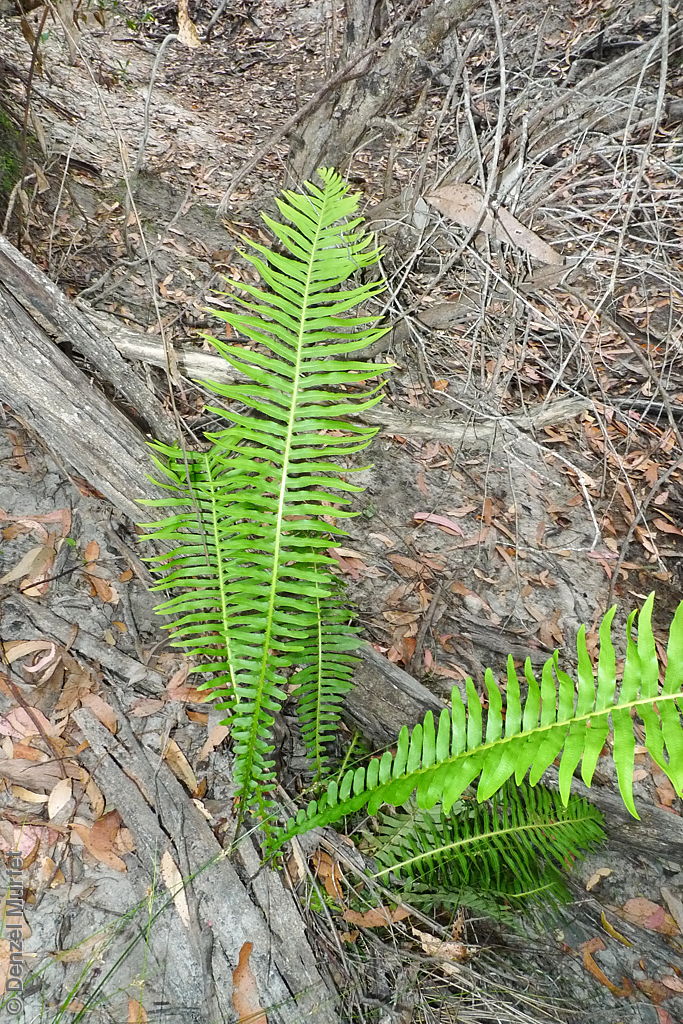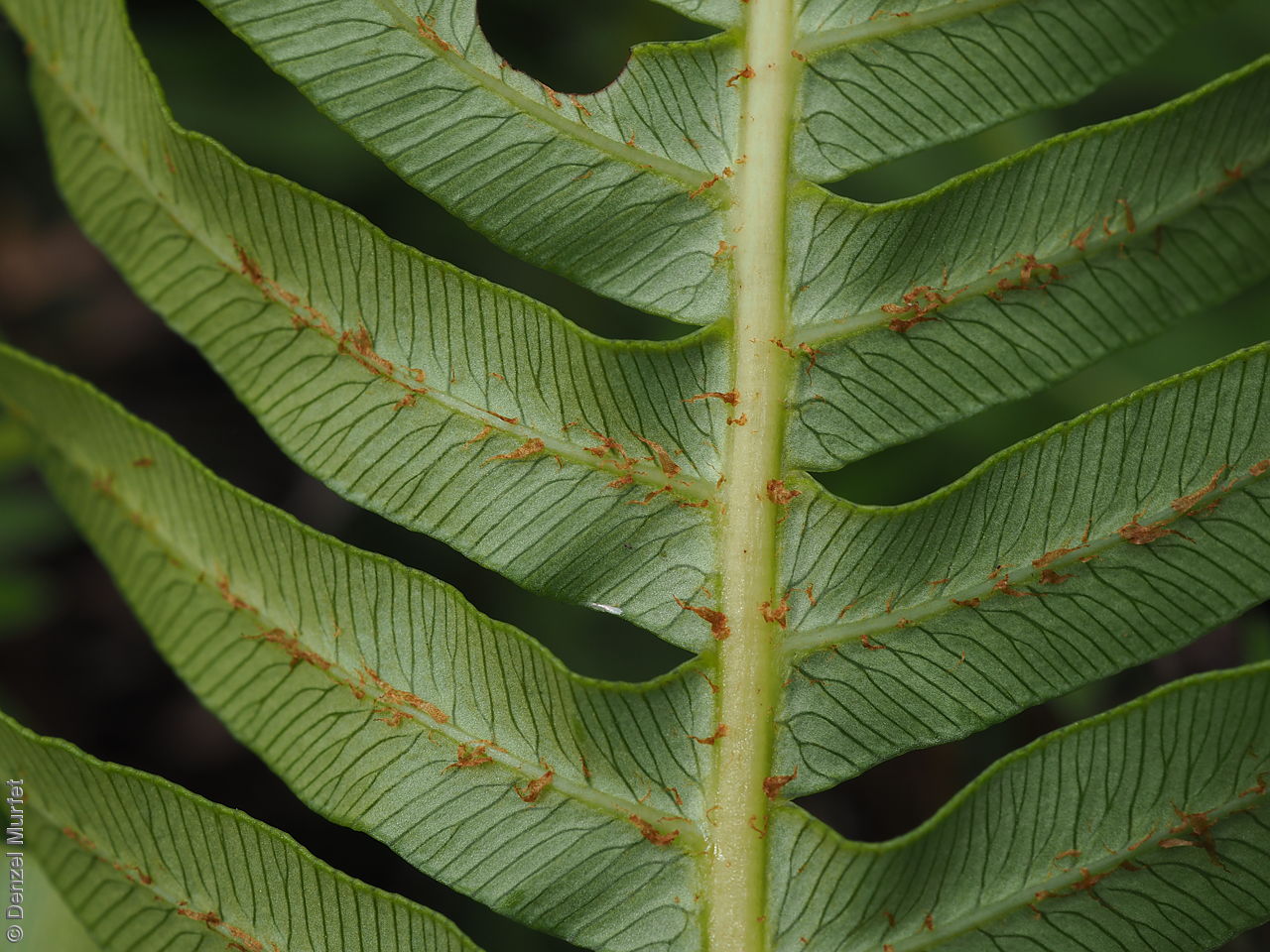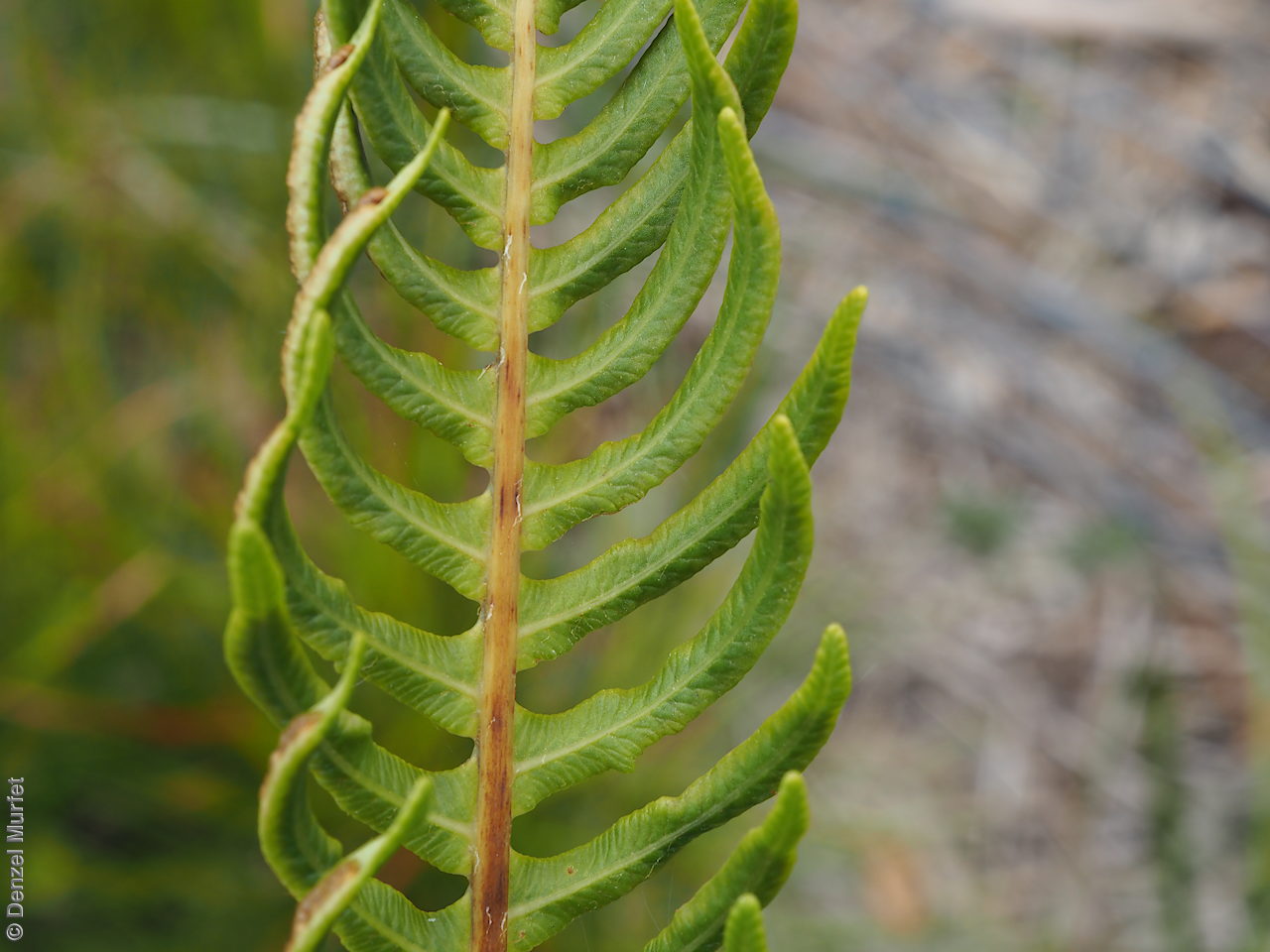











Botanical art
Prior names
Lomaria nudum
Onoclea nuda
Blechnum discolor, partly
Etymology
Blechnum from the Greek 'blechnon', the name for ferns in general. Nudum from Latin meaning naked.
Distribution and status
Found on Kangaroo Island and the southern Mount Lofty Ranges in South Australia, growing along stream banks in shaded gullies. Also found in Queensland, New South Wales, Victoria and Tasmania. Native. Uncommon in South Australia. Common in the other States.
Herbarium regions: Southern Lofty, Kangaroo Island, Green Adelaide
NRM regions: Adelaide and Mount Lofty Ranges, Kangaroo Island
AVH map: SA distribution map (external link)
Plant description
Erect fern to 1 m tall with short trunk and short rhizome. Fronds to 60 cm long are clustered near the tip of the rhizome, with a short, thick, black and shiny stem that is covered with long, dark, shiny scales. The lamina of the frond is divided into pinnae which are longer near the centre of the frond, decreasing in size towards both the tip and base. There are distinct fertile and sterile fronds. The sterile fronds are usually longer and considerably broader than the fertile fronds and are mid-green on the upper surface and paler below, while young fronds are yellow-green. Fruits are dark brown sori along the edge on the underside of the fronds. Seeds are ripe spores are dark brown or black.
Seed collection and propagation
Look under the fronds and collect ones with spores and place in a seal paper bags to prevent spores from fulling out. Leave fronds in the paper bag to dry. The spores will fall off naturally or give the fronds a gentle shake. Use a very fine sieve to separate any unwanted material. Be careful as the spores are very fine. Store spores in an air tight container in a cool and dry place or in a -20oC freezer.